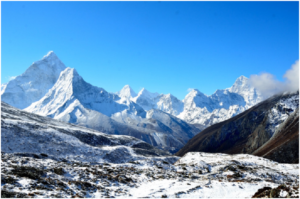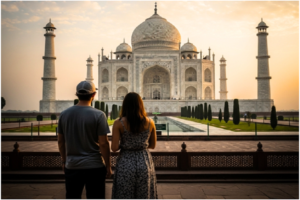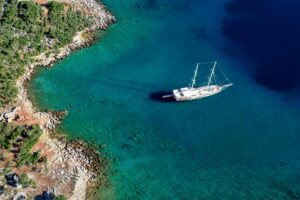Discover Nepal’s Most Famous Treks : Mount Kailash, Langtang, Everest and Annapurna

Nepal, a heaven settled in the lap of the Himalayas, offers trekkers an encounter not at all like any other in the world. Its wealthy mix of otherworldly existence, nature, culture, and experience has made it a best goal for trekkers universally. Among the numerous unimaginable trails, four stand out for their popularity and extraordinary encounters: Mount Kailash Mansarovar Yatra, Langtang trek, Everest Base Camp short trek, and the Annapurna Base Camp trek. Each of these treks gives something special, whether it’s otherworldly arousing, beautiful excellence, Himalayan scenes, or social drenching. Let’s plunge into the diagram and highlights of each trek.
Mount Kailash Mansarovar Yatra
The Mount Kailash Mansarovar Yatra is not a fair trek but a profoundly otherworldly journey for Hindus, Buddhists, Jains, and Bon adherents. Mount Kailash is considered the dwelling place of Master Shiva, and circumambulating this sacrosanct top is accepted to wash away the sins of a lifetime. The travel begins from Nepal and crosses over into Tibet, where the sacrosanct lake Mansarovar and the compelling Kailash dwell. The Yatra offers not as it were magnificent views of the Himalayas but moreover profoundly moving minutes of inward reflection. The stark excellence of the Tibetan level, the strongly otherworldly vitality of Kailash, and the quiet waters of Mansarovar Lake make a transformative encounter for pioneers and trekkers alike. It is a high-altitude trek requiring great physical wellness and a conscious approach to the region’s devout significance.
Langtang Trek
The Langtang trek is one of Nepal’s most open and underrated treks. Beginning a few hours’ drive from Kathmandu, this path leads into the wonderful Langtang Valley, known for its shocking elevated view, different vegetation and fauna, and Tamang culture. The path winds through thick timberlands of rhododendron and bamboo, past surging streams and waterfalls, driving to the tall valley encompassed by snow-capped peaks. Kyanjin Gompa is a major highlight, advertising all encompassing sees and get to adjacent climbs like Kyanjin Ri and Tserko Ri. The Langtang region was intensely affected by the 2015 seismic tremor but has since recouped astoundingly, and trekking here too bolsters neighborhood communities in revamping. It’s a great choice for those looking for excellence, culture, and a calmer path experience.
Everest Base Camp short Trek
For those short on time but energetic to witness the grandness of Mount Everest, the Everest Base Camp short trek is the idealized elective. This condensed adaptation of the classic trek skips the long acclimatization days while still taking you through the center highlights—Namche Bazaar, Tengboche Cloister, and the elating base camp itself. The course highlights breathtaking mountain sees, counting Everest, Lhotse, and Ama Dablam, along with Sherpa towns, suspension bridges, and colorful supplication banners rippling in the breeze. Whereas shorter in term, this trek still requests stamina due to the height, and trekkers ought to be arranged for fast-paced risings. It is a perfect trek for explorers who need the Everest involvement without committing three full weeks.
Annapurna Base Camp Trek
The Annapurna Base Camp trek offers an immersive travel into the heart of the Annapurna range. From lavish subtropical timberlands and terraced areas to elevated scenes encompassed by towering peaks, the assortment on this trek is unmatched. Beginning from Pokhara, the path passes through charming Gurung and Magar towns, giving sufficient opportunity to lock in with the neighborhood culture. As you climb, you’ll experience the sensational Annapurna Haven, a normal amphitheater of snow-capped monsters like Annapurna I, Machapuchare, Hiunchuli, and Gangapurna. Coming to the base camp at 4,130 meters is a fulfilling encounter, with dawn sees that take off an enduring impression. This trek combines normal magnificence with social lavishness and is directly in trouble, making it available to a wide extent of trekkers.
Choose Which is Best for You From These Treks
Choosing the best trek depends to a great extent on your interface, wellness level, accessible time, and what you trust to pick up from the involvement. If you’re profoundly slanted and need a life-changing trek, the Mount Kailash Mansarovar Yatra is unmatched. For those who need a less-crowded, socially wealthy trek near Kathmandu, Langtang is idealized. If seeing Mount Everest is your extreme objective but you’re short on time, the Everest Base Camp short trek offers a productive however exciting encounter. And if you’re looking for an adjusted enterprise with culture, biodiversity, and epic mountain seeds, Annapurna Base Camp is an all-time favorite. Each trek offers a one of a kind feature of Nepal’s appeal, and no matter which you select, the trip will be unforgettable.
Itinerary Day by Day for These Treks
Mount Kailash Mansarovar Yatra (14–18 Days)
Day 1: Arrive in Kathmandu
Day 2-3: Kathmandu touring and visa prep
Day 4: Drive to Syabrubesi
Day 5-6: Cross into Tibet – Kerung
Day 7-9: Drive to Mansarovar Lake
Day 10: Drive to Darchen
Day 11-13: 3-day Kailash Kora (trekking around Mount Kailash)
Day 14-17: Return travel to Kathmandu
Day 18: Departure
Langtang trek (10 Days)
Day 1: Drive from Kathmandu to Syabrubesi
Day 2: trek to Lama Hotel
Day 3: trek to Langtang Village
Day 4: trek to Kyanjin Gompa
Day 5: Climb to Tserko Ri or Kyanjin Ri
Day 6: Return to Lama Hotel
Day 7: trek to Syabrubesi
Day 8: Drive back to Kathmandu
Everest Base Camp short trek (12 Days)
Day 1: Flight to Lukla, trek to Phakding
Day 2: trek to Namche Bazaar
Day 3: Acclimatization climb around Namche
Day 4: trek to Tengboche
Day 5: trek to Dingboche
Day 6: trek to Lobuche
Day 7: trek to Everest Base Camp through Gorak Shep
Day 8: Climb Kala Patthar, return to Pheriche
Day 9-10: trek back to Lukla
Day 11: Fly to Kathmandu
Day 12: Departure
Annapurna Base Camp trek (11 Days)
Day 1: Drive to Nayapul, trek to Ghandruk
Day 2: trek to Chhomrong
Day 3: trek to Bamboo
Day 4: trek to Deurali
Day 5: trek to Annapurna Base Camp
Day 6: Investigate and slip to Bamboo
Day 7: trek to Jhinu Danda (hot springs)
Day 8: trek to Nayapul, drive to Pokhara
Day 9-10: Investigate Pokhara
Day 11: Return to Kathmandu
Best Time
The perfect seasons for all these treks are spring (March to May) and harvest time (September to November). These months offer clear skies, steady climate, and mind blowing sees. For the Mount Kailash Yatra, late spring and early summer (May to early July) are favored due to Tibetan border availability and milder temperatures. Summer brings storm downpours, making trails elusive and less picturesque, particularly in Annapurna and Langtang. Winter trekking is conceivable for Langtang and Annapurna but requires planning for snow and cold.
Accommodation & Food
During all these treks, settlement ranges from essential tea houses to humble guesthouses. In Langtang and ABC, trekkers rest in cozy lodges run by nearby families, advertising conventional suppers like dal bhat, noodles, soups, and momos. The Everest region offers somewhat more created offices, counting pastry shops and Wi-Fi in Namche Bazaar. On the Kailash Yatra, convenience incorporates a blend of guesthouses and tents, depending on the remoteness of the course. Suppers are ordinarily vegan and straightforward due to tall height and inaccessible areas. Clean water is accessible at all stops, in spite of the fact that it’s suggested to bring decontamination tablets or filters.
Health & Safety
Health and security are basic, particularly given the tall heights included. Intense Mountain Ailment (AMS) is a hazard, especially on the Everest and Kailash treks, so legitimate acclimatization is basic. Travel protections with high-altitude scope are profoundly prescribed. Continuously carry a fundamental to begin with: help unit, water filtration strategies, and any individual solutions. Remain hydrated, walk at a relentless pace, and never overlook side effects of elevation affliction. Trekking with an authorized direct is exhorted for security, back, and superior understanding of the region.
Culture & Hospitality
Nepal’s most prominent treasure might be its individuals. Along each path, trekkers are met with warmth, grins, and veritable neighborliness. In Langtang, the Tamang community offers their Buddhist culture and conventional music. In the Annapurna region, Gurung and Magar societies are unmistakable, frequently stamped by dynamic moves and customs. The Everest region exhibits the pleased Sherpa legacy, whereas the Kailash course is filled with profoundly otherworldly experiences, counting Tibetan ministers and pioneers. Whether tasting butter tea with local people or going by centuries-old cloisters, social drenching includes soul to the trekking trek.
Packing and Gear
For all treks, pack layered clothing appropriate for shifting temperatures—light shirts for day climbing and protective coats for the nights. Great climbing boots, a warm resting pack, trekking posts, and a headlamp are basic. Rain adapt is significant amid the storm season. For Kailash, oxygen supplements and warm equipment are unequivocally prescribed due to extraordinary heights and remoteness. Don’t disregard sun security, a wide-brim cap, and a refillable water bottle. A little daypack with snacks, a control bank, toiletries, and individual reports is too much.
Necessary Tips for Trekking
Start preparing at slightest a month in progress with cardio and quality works out to plan for high-altitude strolling. Continuously tune in to your body and take acclimatization days truly. Book your trek with a legitimate company that gives experienced guides and watchmen. Learn a few neighborhood expressions to improve your encounter and regard nearby traditions, particularly around sacrosanct places like Mount Kailash and religious communities. Carry cash in neighborhood cash, as ATMs are uncommon on the trails. And most imperatively, trek responsibly—respect nature, don’t litter, and bolster neighborhood businesses.
Conclusion
Trekking in Nepal is a journey into an arrival of otherworldly profundity, rough magnificence, and endearing neighborliness. Whether you look for the divine atmosphere of Mount Kailash, the covered up charm of Langtang, the excitement of standing at Everest’s base, or the peaceful appeal of Annapurna’s asylum, Nepal offers a trek for each traveler. Each path brings you face-to-face with nature’s greatness and the flexible soul of mountain communities. It’s more than fair a hike—it’s a transformative encounter that will take you propelled long after the trip ends.
FAQs
Q: Do I require a direct for these treks?
A: Whereas Langtang and ABC can be done freely, having a direct relationship improves security and social understanding. For Everest and Kailash, guided treks are exceedingly suggested or required.
Q: How fit ought to I be?
A: Direct wellness is sufficient for Langtang and ABC. Everest and Kailash require higher stamina due to height and long trekking days.
Q: Can fledglings do these treks?
A: Yes, with appropriate arrangement. Langtang and Annapurna are beginner-friendly. Everest and Kailash are more challenging but achievable with preparation and guidance.
Q: What licenses are needed?
A: TIMS and national stop grants are required for Langtang and ABC. The Everest region needs a Khumbu permit. Kailash requires a Chinese visa and extraordinary licenses through visit operators.
Q: Is the web available?
A: The Web is accessible in most parts of Annapurna and Everest by means of Wi-Fi or information SIM. Langtang has a restricted network. Kailash has an exceptionally confined area due to remoteness.
Contact Us
The Nepal Trekking Pvt. Ltd.
Mobile : +977-9841273869
Email: info@thenepaltrekking.com





